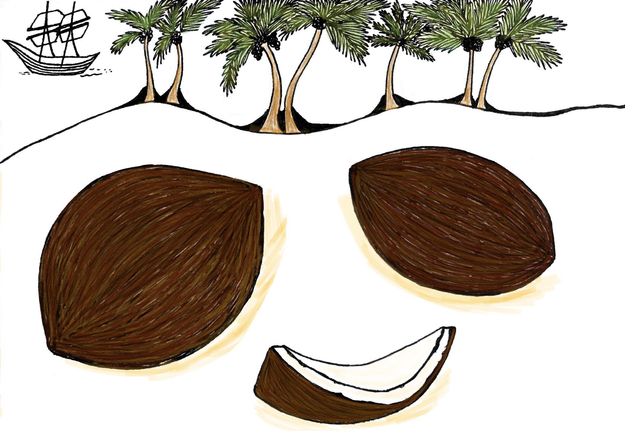The coconut is often viewed as a defining feature of the ‘tropical’, including the Caribbean. It is emblematic of Caribbean coastlines, which are lined with coconut trees. Throughout history, it also became a key ingredient in Caribbean cuisines - whether in the form of coconut milk in thick curry dishes or shredded coconut are only a few ways the coconut is used in Caribbean recipes.
Despite this, the coconut is not indigenous to the Caribbean. Rather, its origins are in South-East Asia and the Indian Ocean. The specific period it arrived in the Caribbean is not known, however is likely to be as early as the 1500's. Coconuts were carried aboard ships as they were a good way of carrying sterilised water during long journeys. One story states that due to an accidental shipwreck of a Spanish colonial ship in the Pacific, the large numbers of coconuts on-board were released into the water and floated towards the shores of Caribbean islands. The seeds were then planted along the shores and, and together with the warm climate, coconut trees started to grow. Another source stresses that coconuts were planted intentionally along sugar plantations to give water and food to those working on the plantations.
Colonialism had a large role in food production and export. What’s more, the foundations of colonialism were motivated by food and the economy surrounding it. These motivations ranged from transporting labour to work on food plantations to then transport and trade food products to locations around the world. Delving into the story behind specific ingredients and how they were incorporated into a cuisine can reveal much about the historical experience of that region. The story of how the coconut reached the Caribbean is part of the regions wider historical experience of colonialism and migration.
Sources
Brouwers, L. (2011) ‘Coconuts: not indigenous, but quite at home nevertheless’ The Scientific American, Available at: https://blogs.scientificamerican.com/thoughtomics/httpblogsscientificamericancomthoughtomics20110801coconuts-not-indigenous-but-quite-at-home-nevertheless/ [Last accessed: 15/10/20]
Prasad, R. (2011) ‘Coconut: origin and east-west spread from Asia’ The Hindu, Available at:
https://source.wustl.edu/2011/06/deep-history-of-coconuts-decoded/#:~:text=The%20Indian%20Ocean%20coconut%20was,and%20also%20to%20coastal%20Brazil [Last accessed: 15/10/20]
